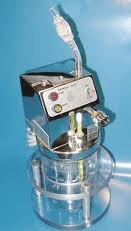 Over 20,000 DWI cases in New Jersey are being called into question due to problems with the recalibration of breath-testing machines. According to New Jersey 101.5, Sgt. Marc Dennis skipped a critical step each time he recalibrated the machines. Plaintiffs in a class-action lawsuit now seek to vacate thousands of convictions in which evidence was produced by those breath-testing machines. Although this debacle occurred in New Jersey, it illustrates the importance of properly maintaining breath-testing machines in Ohio DUI/OVI cases.
Over 20,000 DWI cases in New Jersey are being called into question due to problems with the recalibration of breath-testing machines. According to New Jersey 101.5, Sgt. Marc Dennis skipped a critical step each time he recalibrated the machines. Plaintiffs in a class-action lawsuit now seek to vacate thousands of convictions in which evidence was produced by those breath-testing machines. Although this debacle occurred in New Jersey, it illustrates the importance of properly maintaining breath-testing machines in Ohio DUI/OVI cases.
In Ohio DUI/OVI cases, there is a distinction between a calibration and a calibration check. When breath-testing machines are built, the machines must be ‘taught’ to identify and quantify alcohol (ethanol). That ‘teaching’ process is a calibration. As a machine is being used by a law enforcement agency, the agency periodically runs a test to confirm the machine produces accurate results. The test is done using a simulator like the one pictured here. That periodic test is a calibration check.
Calibration checks, also referred to as ‘instrument checks’, are done at least once per week in Ohio. The weekly instrument checks are conducted by the law enforcement agency which owns and/or operates the breath-testing machine. Some agencies assign the responsibility to one officer, and, in other agencies, multiple officer share the responsibility of conducting weekly instrument checks.
During a weekly instrument check, the officer is checking whether the breath-testing machine produces an accurate result. To do that, the officer uses a solution of water with a known concentration of alcohol such as .100 mg/dl. The officer heats that solution to 32 degrees Celsius, the reported average temperature of human breath. In the simulator containing the liquid solution, vapor forms in the space above the liquid. That vapor is then pushed through the machine. As the alcohol content in the vapor is .100, the machine should produce a result of .100.
Ohio Administrative Code chapter 3701-53 contains regulations regarding instrument checks. The regulations require the checks to be done once every seven days by an individual with a valid senior operator permit issued by the Ohio Director Of Health. The result of the instrument check must be within .005 of the known concentration of the instrument check solution. The solution must be from a refrigerated bottle which has been used less than 90 days and from a batch which is less than one year old. The results of the weekly instrument checks must be kept for at least three years.
If a breath-testing machine is not maintained in accordance with the Ohio Administrative Code regulations, the results produced by the machine are not admissible in a trial. If a defense lawyer files a motion to suppress the breath test, the prosecution is required to prove the law enforcement agency complied with the Ohio Administrative Code regulations. If the prosecution cannot prove substantial compliance with the regulations, the breath test is excluded from trial (‘thrown out’).
In Ohio cases involving breath tests, DUI / OVI defense lawyers should generally challenge the admissibility of the breath test by filing a motion to suppress the test and reviewing the records for the machine. Unfortunately, many defense lawyers do not properly challenge breath tests. Without properly challenging the breath test, a lawyer and his client will never know if the test could have been suppressed.
It is unclear whether defense lawyers in New Jersey reviewed the calibration records for the machines with 20,000 botched calibrations. It’s possible the attorneys reviewed the records frequently but the officer falsified the documents to avoid detection of his botched calibrations: the officer is charged with records tampering. The officer is also being sued in the class-action suit, along with the New Jersey Police Department and the New Jersey Attorney General’s Office. That lawsuit should reveal more details about the calibration checks. The entire incident reveals the importance of lawyers investigating diligently.
 Columbus OVI/DUI Attorney Blog
Columbus OVI/DUI Attorney Blog

